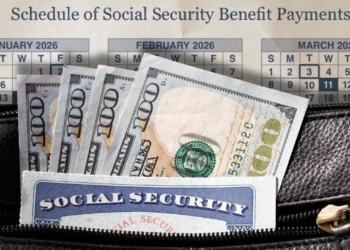Social Security Disability Insurance (SSDI) operates on a fixed monthly distribution calendar, and August 2025 follows this established pattern with payments landing across three specific Wednesdays: August 13th, August 20th, and August 27th.
If you’re not familiarized with the program, the SSDI payments are intended to cover basic expenses for workers who suffered a disability that impedes them to perform a substantial gainful activity (SGA), and that who have paid long-enough Social Security taxes.
August delivery times for SSDI benefits in August 2025
The timing for delivery of payments hinges directly on your birthdate under the system administered by the Social Security Administration. Individuals born within the 1st through the 10th, can typically expect their funds to arrive on the month’s second Wednesday. For August 2025, that second Wednesday falls on the 13th.
Those celebrating birthdays between the 11th and the 20th will find their payment deposited on the third Wednesday, which is August 20th. Beneficiaries born on the 21st or later in the month receive their SSDI on the fourth Wednesday, making August 27th their payment date for that month.
However, an important historical exception exists: if your SSDI benefits commenced before May 1997, your payment consistently arrives on the 3rd day of every month, completely bypassing the birthdate schedule (except in case of weekend or holiday).
Furthermore, recipients who also qualify for Supplemental Security Income should anticipate their SSDI and SSI payments arriving on separate dates. While SSDI adheres to the birth-date-driven Wednesday schedule, SSI payments generally hit accounts on the first day of each month.
Should that first day coincide with a weekend or a federal holiday, the SSI payment gets moved forward to the last preceding business day.
The most reliable method involves logging into your personal “My Social Security” account online. Alternatively, checking directly with your bank or credit union is a good idea, as many financial institutions process these government deposits slightly early, sometimes crediting accounts one or even two business days before the Social Security Administration’s official payment date.
Qualifying for the 2025 SSDI maximum payment of $4,018
Reaching the peak SSDI payment of $4,018 monthly in 2025 requires meeting strict criteria directly tied to your lifetime earnings and work history under Social Security. This substantial amount represents the absolute highest benefit and is far from automatic; only a subset of beneficiaries with exceptional work records will qualify.
The foundation rests on your history of contributing to the Social Security system through payroll taxes, commonly known as FICA taxes. The Social Security Administration quantifies this history using “work credits,” sometimes referred to as “quarters of coverage.”
Generally, accumulating 40 work credits, which translates roughly to ten years of substantial work, establishes basic eligibility for SSDI itself. Younger workers disabled early in their careers might qualify with fewer credits, but they inherently cannot reach the maximum benefit level due to insufficient time contributing at high levels. Beyond simply qualifying, the benefit calculation heavily emphasizes your earnings history.
The formula uses your Average Indexed Monthly Earnings, abbreviated as AIME. This complex figure represents an inflation-adjusted average of your monthly earnings during your highest-earning years. To even approach the $4,018 maximum, you typically needed to earn income very close to, or at, the annual Social Security taxable maximum wage base for a significant portion of your career.







